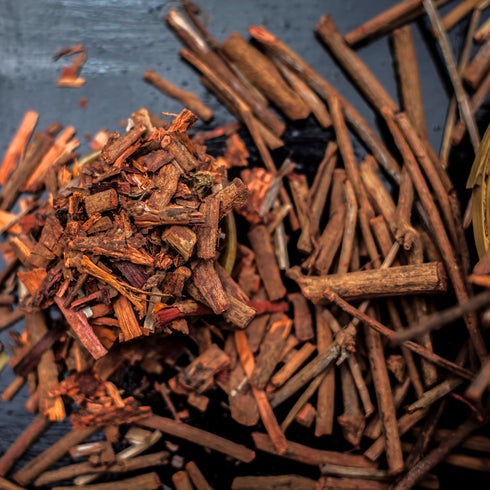Rubia tinctorum
Days to Maturity: 3rd Season for Dye from Roots
Madder is a perennial natural dye plant famous for the gorgeous red color its roots produce. A member of the coffee family, it was the main source of red across old Europe, Asia and northern Africa in fine textiles and pigments. Today it is still a mainstay for natural dyers. The color purple can also be produced by combining madder with indigo.
Now for some fascinating and devastating history-- The color red has commonly been associated with power, fertility, protection and immortality. A red natural dye is hard to come by, but also can be extracted from scale insects called kermes, including cochineal that live on the prickly pear cactus. Diné and Pueblo artisans have been using cochineal for red in textiles, rugs, blankets, clothing and pottery for at least many centuries.
When Hernán Cortés and his conquistadors arrived in present-day Mexico in 1519, red-thirsty Spanish elites descended upon the cochineal used by Aztecs to replace Madder as a more intense and stable red. The Spanish built up an enormous cochineal industry, at its height only surpassed by silver. Their greed--for not only silver and gold but also red--led to the violent enslavement and murder of millions of native Mesoamerican peoples in the 1500s alone, as well as enslaved African peoples brought to the New World as populations of native Mesoamerican peoples dwindled due to death and disease.
Maybe planting Madder can be a tiny step towards healing from this violent past.
Planting Instructions: Start Madder seeds indoors, 8 weeks before last frost, by planting 1/2" deep and keeping seeds moist until germinated (may take a few weeks). Transplant outdoors a foot apart after all danger of frost has passed. Avoid rubbing up too much against the plant or wear gloves, as its prickly hairs cause rashes. Roots are ready to be harvested in the 3rd season.
Seed Saving Instructions: Madder can sprawl and take over, so you may want to avoid allowing madder plants to go to seed. Also mow or dig out runners that will shoot up. If seeds are desired however, gather them by gently pulling them off the plant when they are fully black and dry.
Approx 35 Madder seeds per packet

